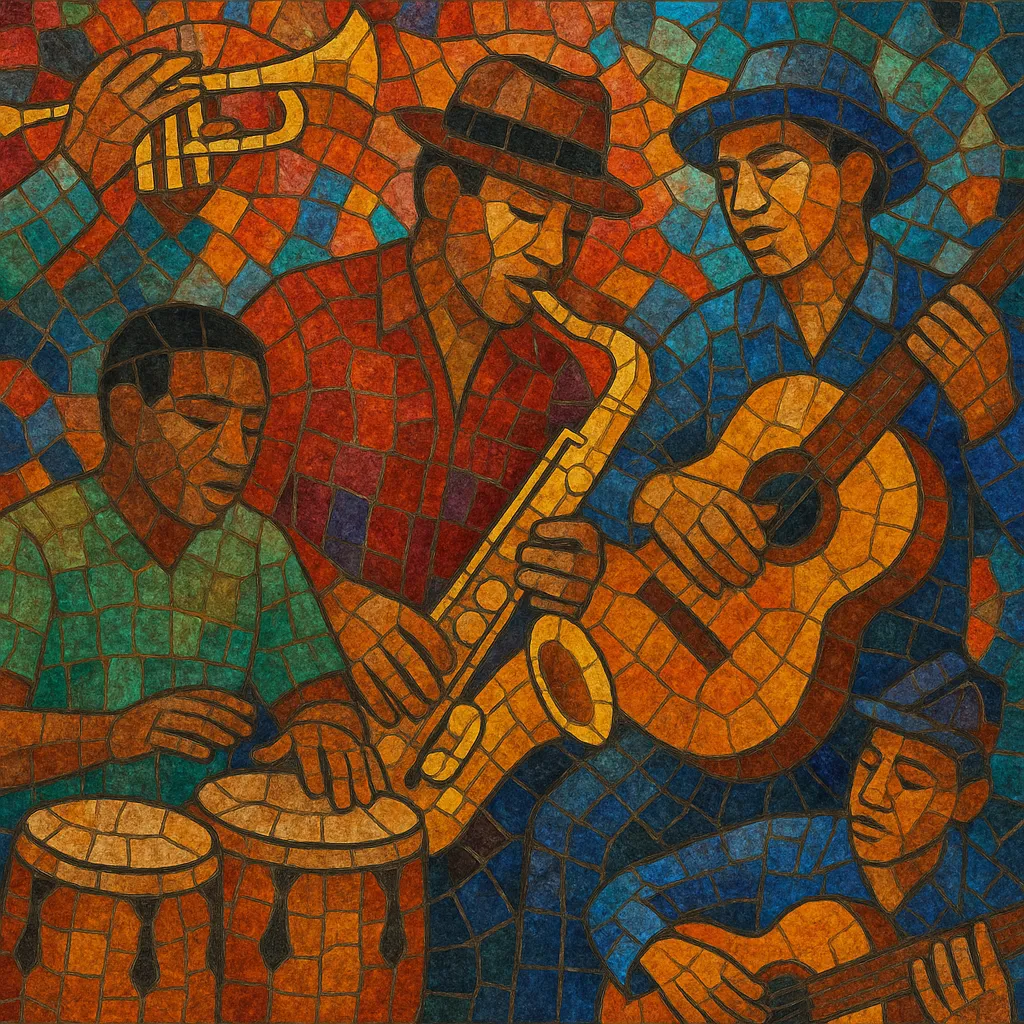Latin jazz is a fusion of jazz harmony and improvisation with Afro–Latin American rhythms, song forms, and percussion. It combines the swing, bebop, and big-band traditions with clave-based grooves such as son, rumba, danzón, and mambo, and later integrates Brazilian feels like samba and bossa nova.
Typical features include the use of the clave (2–3 or 3–2), piano montunos (guajeos), bass tumbao patterns, timbales cáscara, conga marcha, and call-and-response horn "mambo" figures. While the rhythm section locks into cyclical patterns, soloists improvise using the vocabulary of jazz, creating music that is both danceable and harmonically rich.
Latin jazz crystallized in 1940s New York City, where Cuban, Puerto Rican, and American musicians blended swing-era big-band jazz with Afro-Cuban rhythmic structures. Bandleader Machito and musical director Mario Bauzá were pivotal, codifying the fusion with their Afro–Cubans. Around the same time, Dizzy Gillespie and Cuban percussionist Chano Pozo introduced Afro-Cuban rhythms into modern jazz, birthing landmark pieces like "Manteca" and "Tin Tin Deo."
The style spread through mambo- and cha-cha–era ballrooms and jazz venues. Tito Puente and Tito Rodríguez popularized the idiom with virtuosic timbales and sophisticated arrangements. West Coast vibraphonist Cal Tjader helped broaden the sound, while artists like Mongo Santamaría and Ray Barretto brought congas to the foreground, emphasizing dance-floor energy alongside improvisation.
In Brazil, parallel developments led to bossa nova and samba-jazz, which interfaced heavily with North American jazz. Though distinct, these Brazilian currents are often grouped under the broader Latin jazz umbrella for their rhythmic and harmonic dialogue with jazz.
From the 1970s onward, Eddie Palmieri’s harmonic daring, Paquito D’Rivera’s and Arturo Sandoval’s virtuosic expansions, and crossover with jazz-fusion and world fusion kept the genre innovative. Contemporary Latin jazz embraces pan–Latin American rhythms (from son and rumba to samba and beyond), advanced jazz harmony, and modern production, maintaining its dual identity as both a concert and dance tradition.


